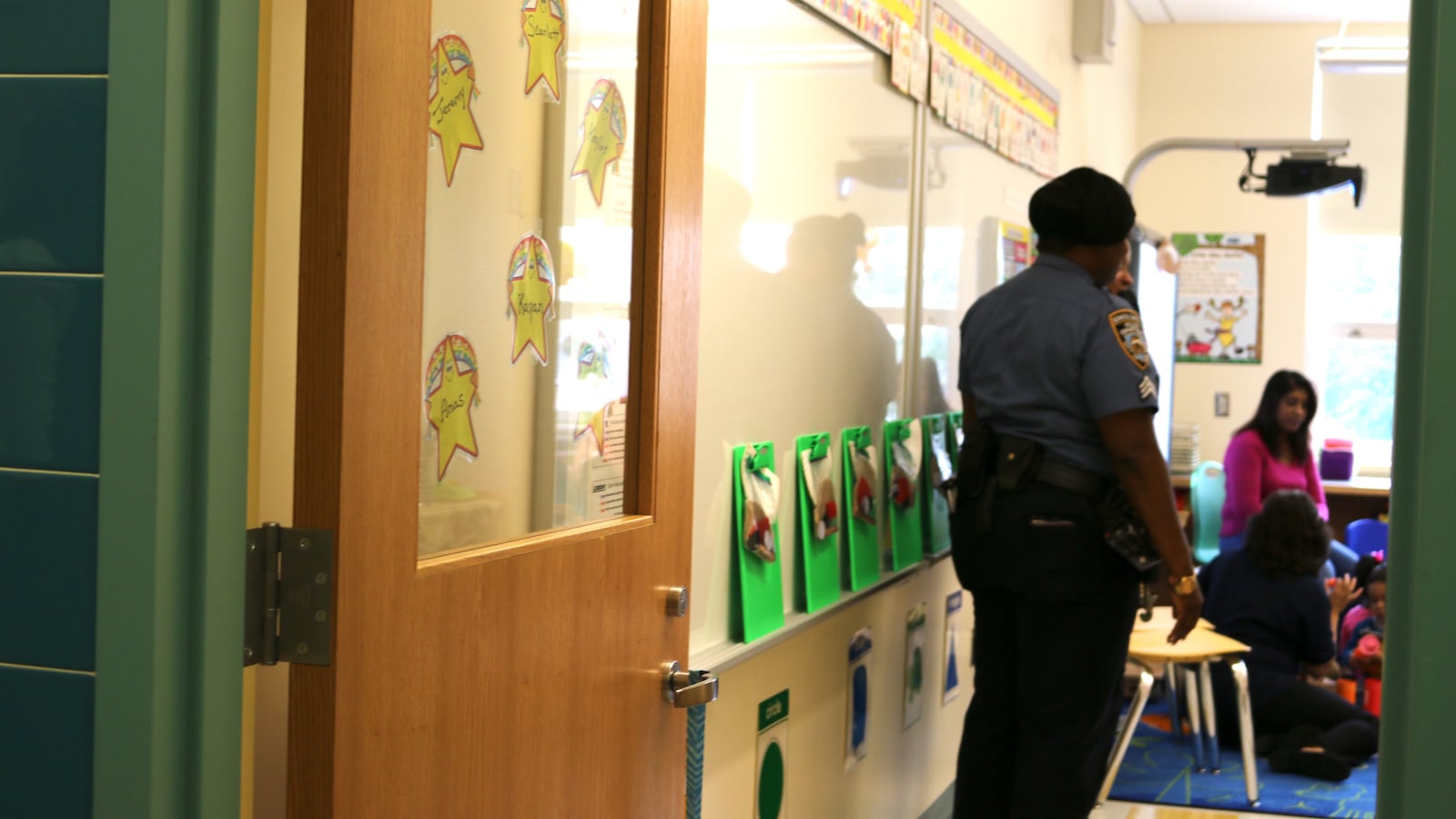More than a year after New York City created a formal procedure for principals to ask for metal detectors to be added or removed from their buildings, almost none have.
Since the guidelines were established in July 2016, just one school campus has asked for a change in how often existing scanners are used in their building, according to officials, who said the request was approved. None have asked for new scanners to be added, they said.
Critics say principals may find the procedure too cumbersome — it involves consulting a long list of school stakeholders before submitting a written request — or they may worry about being blamed if violence breaks out after they ask to get rid of scanners. Others may be content with their metal detectors, or they may not know how to request changes under the new guidelines.
“I just don’t really feel like schools and communities are clear or have been notified — or that there have been actual, clear conversations with them around the new procedure,” said Kesi Foster, an organizer with Urban Youth Collaborative, a student-led social justice organization that has pushed for the removal of metal detectors.
Across the city, 91 school buildings have metal detectors, according to the education department. (Only middle and high schools use scanners; when elementary schools are housed in buildings with metal detectors they use separate entrances.)
The total includes the Urban Assembly School for Wildlife Conservation, the Bronx high school where a student fatally stabbed a classmate in September. The city installed metal detectors at the school after the attack.
In 2015, a school-safety task force convened by Mayor Bill de Blasio said that even as school crime dropped by 48 percent over the previous decade, not a single permanent metal detector had been removed from a school. The report also noted that no formal guidelines existed for adding or removing scanners.
The following year, the education and police departments established such guidelines.
They say that principals who are interested in installing or removing metal detectors — or changing how many days per week existing scanners are used — must first consult a range of stakeholders. Those stakeholders include: members of the school safety committee and leadership team, the school’s union representative, teachers, students, parents, safety agents, and the local superintendent.
If all the groups agree to a change, then the principal must submit a written request. The police and education departments will then review the school’s safety data, conduct a “scanning assessment,” and meet with the principal and superintendent before deciding whether to grant the request.
Some critics say the policy makes requesting changes too difficult.
Jill Bloomberg, principal of Park Slope Collegiate in Brooklyn, has called for the city to remove metal detectors from her building. But she shares a campus with three other schools — and not all the principals feel the same as her, she said.
“The default goes to the principal who wants to keep the metal detectors,” she said.
An education department spokeswoman said principals in shared buildings do not have to come to unanimous decisions about metal detectors. However, the guidelines say principals in the same building must discuss any proposed changes, and that the decision to request changes should be made “collectively.”
The spokeswoman also said that principals were informed of the new guidelines in the education department’s weekly email address to school leaders. They were also invited to attend training sessions to learn about the policy, though the spokeswoman could not say how many school leaders actually attended.
It’s possible some principals have asked for changes without submitting a formal request.
At a recent city council hearing, Councilman Rafael Salamanca of the Bronx said the former principal of Urban Assembly School for Wildlife Conservation — the site of September’s classroom stabbing — had previously asked for metal detectors to be installed in the building. Education department officials said no formal request had been made.
“The events in my district demonstrate the process needs reformed,” Salamanca said in an emailed statement, referring to the process for requesting that metal detectors be added or removed.
Even when schools do not request changes, the police and education departments say they conduct an annual data review of every school with metal detectors to determine whether they are still needed.
Since 2016, the city has changed how often two schools use metal detectors. And three buildings — including the Bronx high school — have started using metal detectors.
While some principals may be unaware of the process for removing metal detectors or worried about the risks, others may want to keep theirs in place.
Evan Schwartz, principal of Alfred E. Smith Career and Technical Education High School in the Bronx, said he has worked in schools with metal detectors for most of his career. In his current building, which multiple schools share, more than 1,000 students stream through metal detectors every morning in a process he described as quick and orderly.
When another principal in the building suggested getting rid of the scanners a few years ago, Schwartz objected.
“It makes it safer for everybody,” he said.

